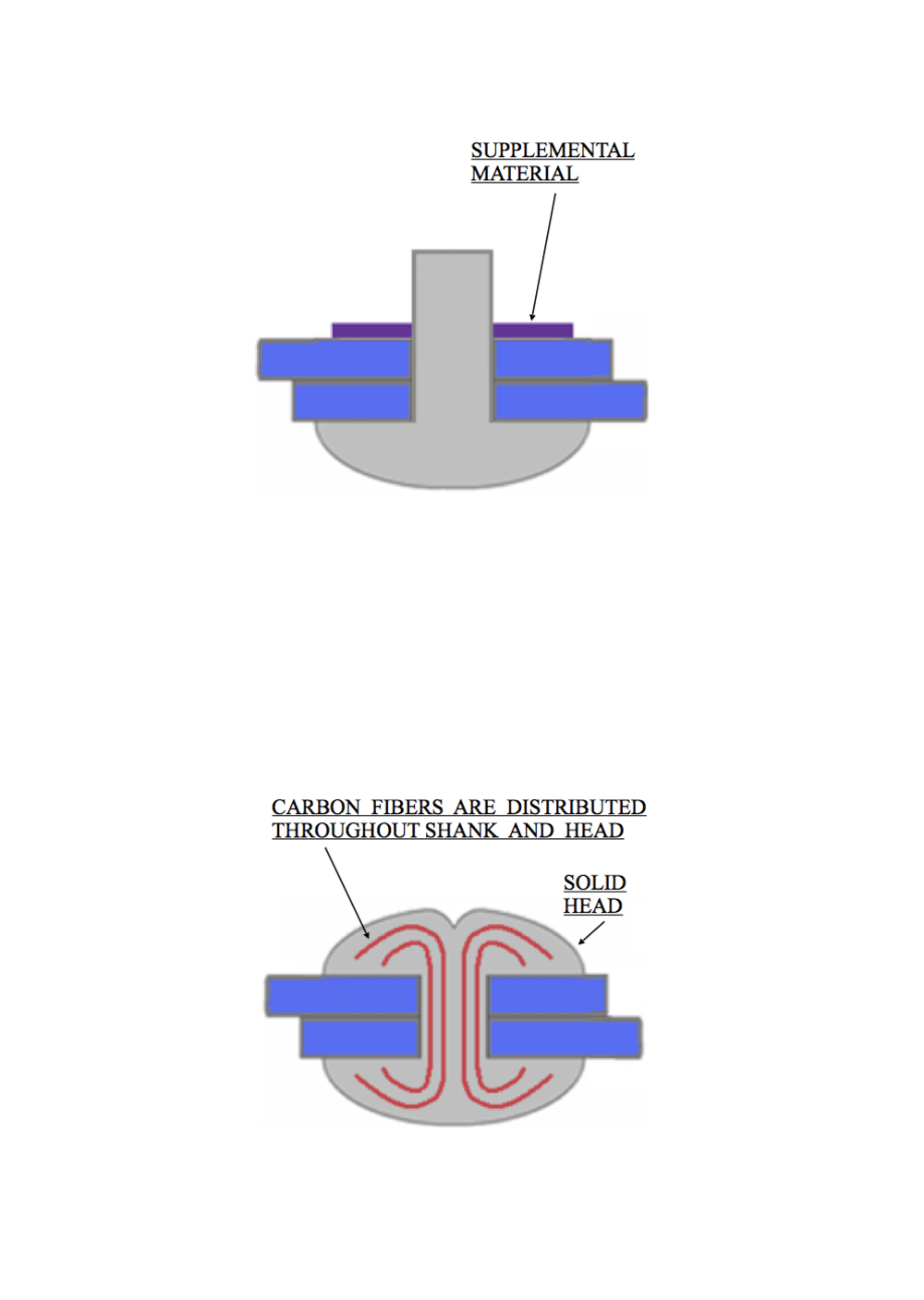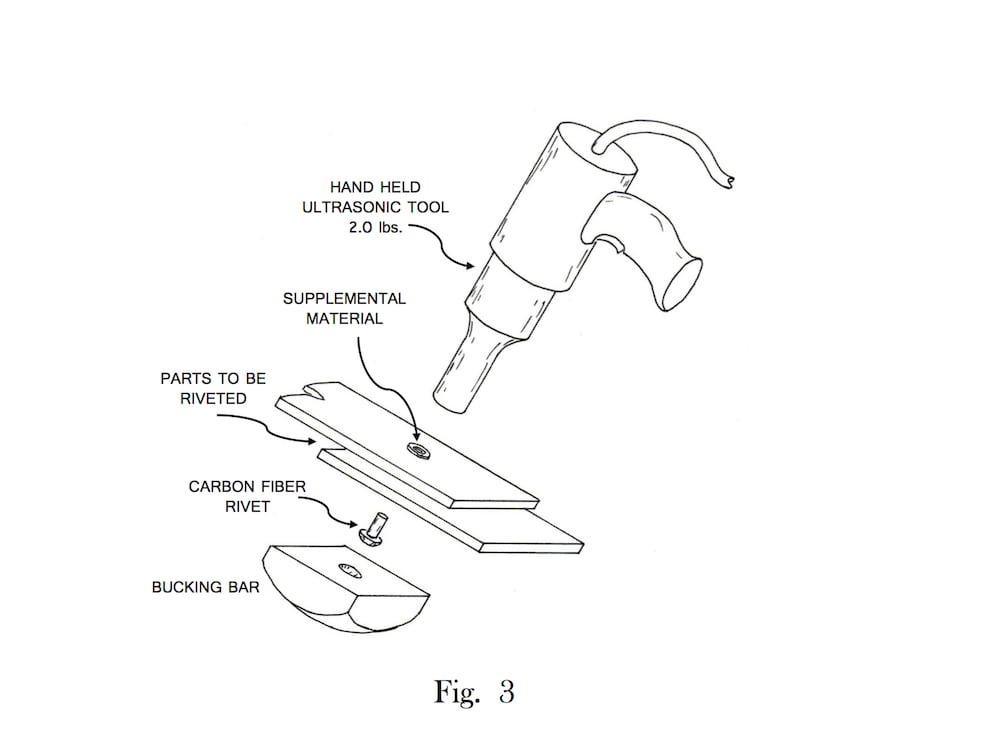The rivet, a simple fastener that has been around forever. How about making
a rivet that is approximately one half the weight of an aluminum rivet
and nearly the same strength? Carbon fiber rivets are the answer. A
practical and economical method of manufacturing and using carbon fiber
rivers arose as a result of identifying the need of a major aircraft
manufacturer. If carbon fiber rivets were available at that time it
would have resulted in a lowering of the airframe weight by a
considerable amount. The carbon fiber rivet was not available then and
for all practical purposes is not available today.
Carbon fiber rivets are composed of approximately 70% lineal carbon
fibers and 30% high-temperature plastic binder. They are lightweight,
strong, noncorrosive, undetectable by radar and have a high softening
and melting temperature. (See photo)
This patented method results in rivet heads that can equal or exceed the
rivet shank strength. This method is economical, easily understood,
uses existing technology and equipment and produces consistent results.
The process uses ultrasonics or another heat source resulting in a
uniform high-quality product regardless of possible variations in
equipment or operator parameters.
In the manufacturing process, the basic materials are carbon fiber rod
and a high temperature thin plastic film. Both of these items are
currently available over the counter. The rod and film are cut to
appropriate size and during rivet head formation the added film material
aids in forming a solid head with continuous fiber reinforcement
throughout the head. The process lends itself to automation very well.
(See drawing)
To rivet objects together, a handheld ultrasonic tool is applied to the
shank while the existing head is supported in place with a bucking bar.
The ultrasonic tool is similar to a small hand drill and weighs less
than 3 pounds. (See sketch)
Economics are an important factor. The advantage of saving weight in
aircraft is obviously important. Lower aircraft weight results in more
passengers, cargo or fuel resulting in higher efficiency and profits.
Decreasing weight and corrosion in the automotive and marine industries
is also very desirable. For instance , a change from aluminum to carbon
fiber rivets in the internal wing structure of a large commercial
aircraft would result in an approximate weight saving of 1.5 tons. This
is hard to believe but is well documented. At one time carbon fiber
rivets cost over $20 and were estimated to be $2 to $3 each in
production quantities. The cost of manufacturing this new patented
carbon fiber rivet is estimated at $0.30 each or less.
The new technonogy for carbon fiber riveting is found in the following
patents:
U.S. 7,351,022 B2 Unified Multi-Part Head for a Staked Fastener; U.S.
7,921,538 B2
Aligner for Use With a Staked Fastener; and U.S. 7,996,975 B1 Method of
Making Unified Head for a Staked Fastener.
Like this entry?
-
About the Entrant
- Name:Clark Denslow
- Type of entry:individual
- Patent status:patented





